08 Aug How to paint a landscape
Hobart has long been the setting for the picturesque. A European eye finding the sublime. It isn’t strange I suppose. It must have felt like the ends of the earth. The landscape overpowering on its own rendered even more by its distance from home. A long voyage on a ship, with stops progressively more foreign, your distance marked clearly in waves and the setting and rising of the sun. Not like jumping on a plane, eye mask on and meals arriving at times designed to shift you into your new time zone. More like walking. Feeling the distance travelled and seeing the marking of your days as you shift to another place.
I found an old book at the Salamanca Markets. I don’t often go, it is crowded and I have plenty of breadboards. I was coming from an appointment, so I was alone – a rare occurrence to wander by myself – so I had time to look through the records and look through the books. I found a David Bowie record and an old catalogue of Von Guerard. I flipped through and saw a lithograph of his painting of Hobart Town. The ancient mountain, kunanyi, rising above the new colonial outpost. I’ve looked at this work before. A formal composition, idyllic and serene, with no trace of the violence of the colony. The murder, the trauma of the occupation, the struggle, the stink and the harshness of Hobart Town. If you weren’t a resident here, you might even choose to visit on the strength of this painting.
I bought the book and took it in to the studio, thinking about how the history of landscape painting in Tasmania, in Hobart, might be informed by, or might spring from works like this. And further, how people’s expectations of arrival here might also be shaped by works like this. Is this the Hobart people still expect to visit? Is this the Hobart I still see through my own painting?
Moving into a new studio, it has been a long time since I have painted anything large. At home I can paint small. To keep the work portable, to pack it away when the dogs need walking, when the washing is done; to work on while I watch tv once everyone else is sleeping. I bought a wall-sized piece of canvas to think through the start of my project. The think about how the act of painting can answer any of these questions (if it can) or perhaps to begin with: how it can ask these questions.
I wrote on this huge white canvas – always a bit intimidating – with a quote from the book, describing Hobart as having “all the elements of the picturesque “. (It seemed something to ponder). Then I roughly painted in a version of Hobart Town after von Guerard. My canvas is almost square. I don’t know what the research says but I feel myself choosing square compositions more often than the more traditional rectangular golden mean. Is this a function of Instagram? Of using a mobile phone to document, to research, to think. It does remind me of my old lomo holga though too. My first foray into an analogue way of layering landscapes and one which I intend to revisit. Von Guerard’s painting however is proportioned to the Golden Mean. Classic and familiar, so my painting drips towards the bottom of the canvas and the edges are cropped.
After laying in this washy first underpainting, I attended a day conference “Creativity and Changing Landscapes” where we visited (along with the Hadley Landscape Prize and Bett’s Water[shed]) TMAG. We were there to see another exhibition but walking around a corner into a side gallery I came across a room of colonial paintings of Hobart including von Guerard’s.
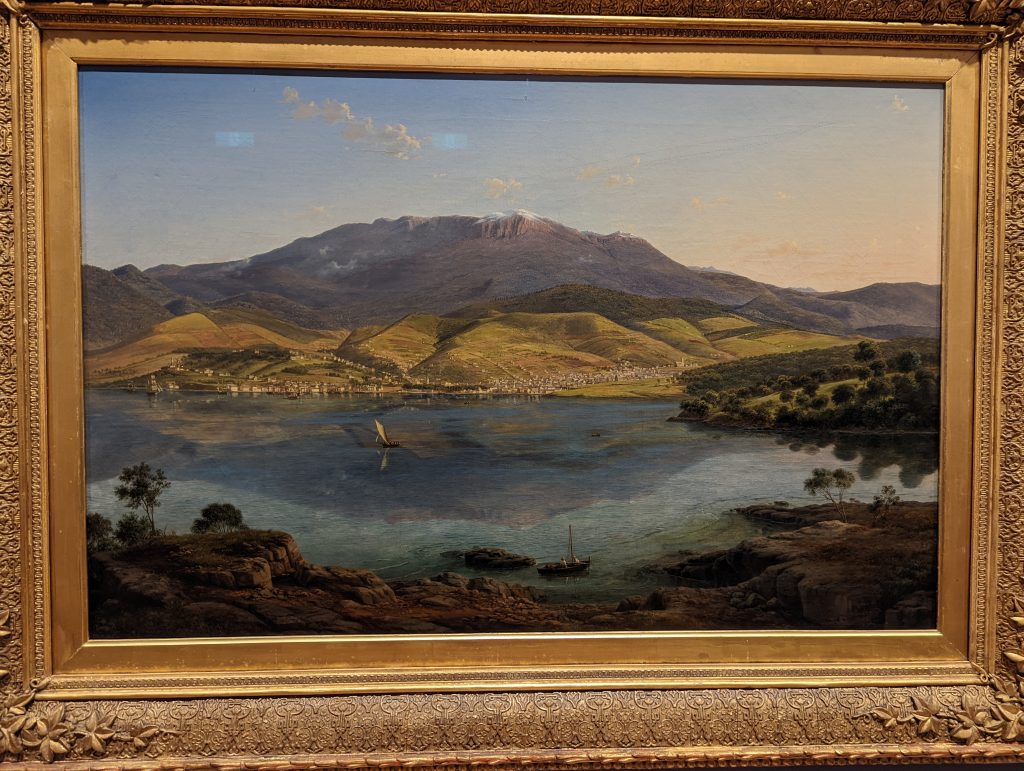
It was more beautiful in real life. The colours clear and the light glowing. The paint surface is more interesting too, washes over the Derwent hinting at depth, soft scuffs of misty clouds sitting at the foot of the mountain.
The entire painting is in focus. The depth of field reaching from the front detail to the mountain. In this way it reads a bit like a digital photo. There is no vanishing point to pull your eye in, but rather set-like strips. I had a game as a child that worked like this. You slotted in a farm animal to the front, a building behind, then a distant landscape. In between each staged section of the scene there was nothing, no connection, and each piece could be slipped out without disturbing the rest of the scene.
I took a photo of the painting in the gallery and a photo of my own work so far (both on my phone). Immediately they’re both on my computer and I play around layering them together. Noting where my own copy fails against the original. I tried to squash more into the square format that I chose. I made the mountain taller, the foothills leading up to the mountain (where my home is) larger, and I misread some elements of the tiny lithograph reproduction, shifting trees from one side of the river to the other.
I printed out a copy of a version that appeared a good combination and repainted my work with this as a reference, changing my palette to include golden yellows, greeny umber shadows, and cerulean skies.
I’ve collected my own photos from this vantage point from my photo cloud. There are plenty that are not dissimilar. I think I’ll layer them over one another, shifting until the copied painting disappears beneath a new image.




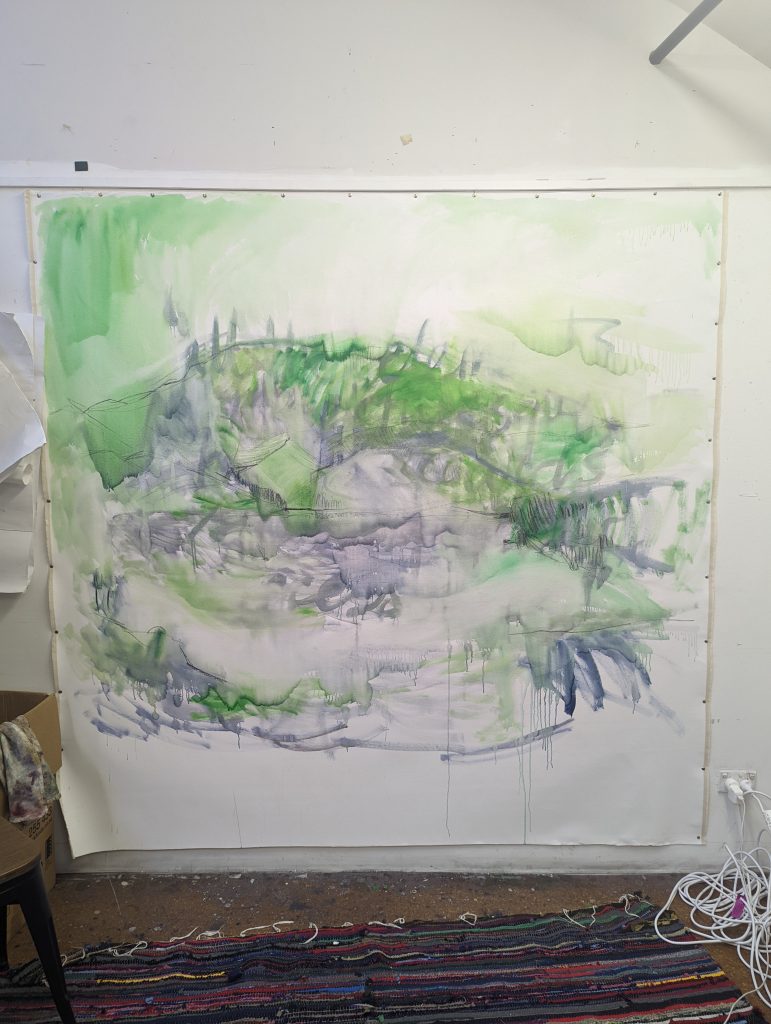
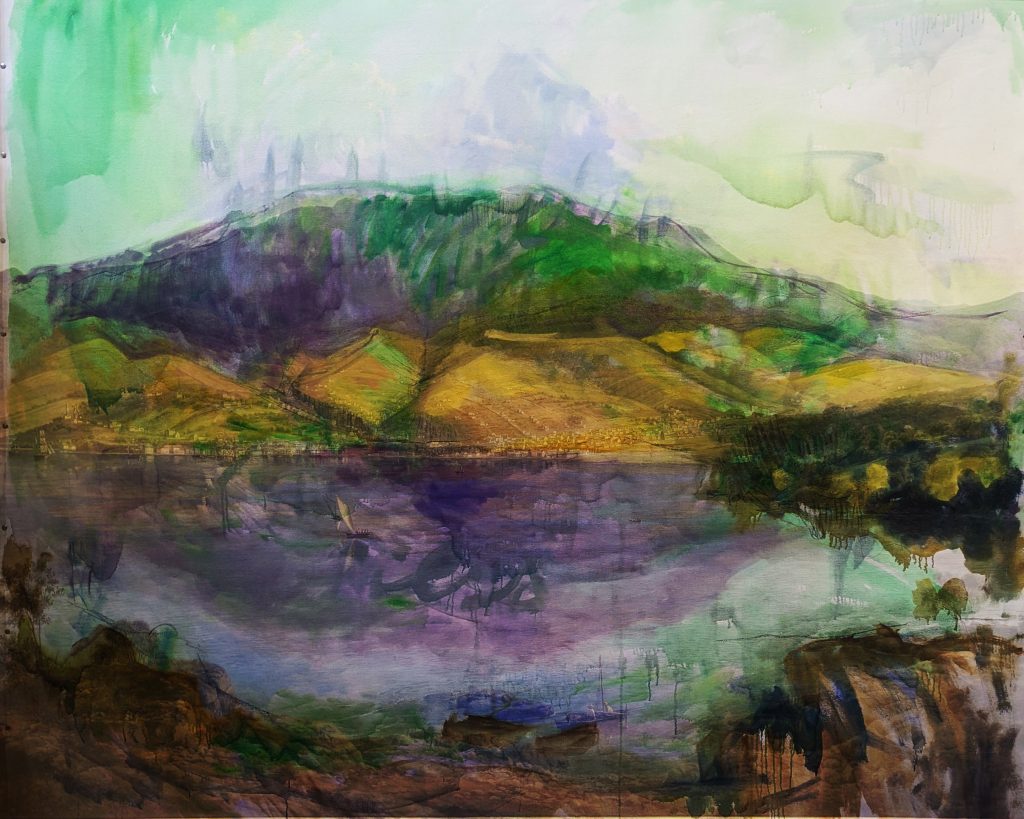
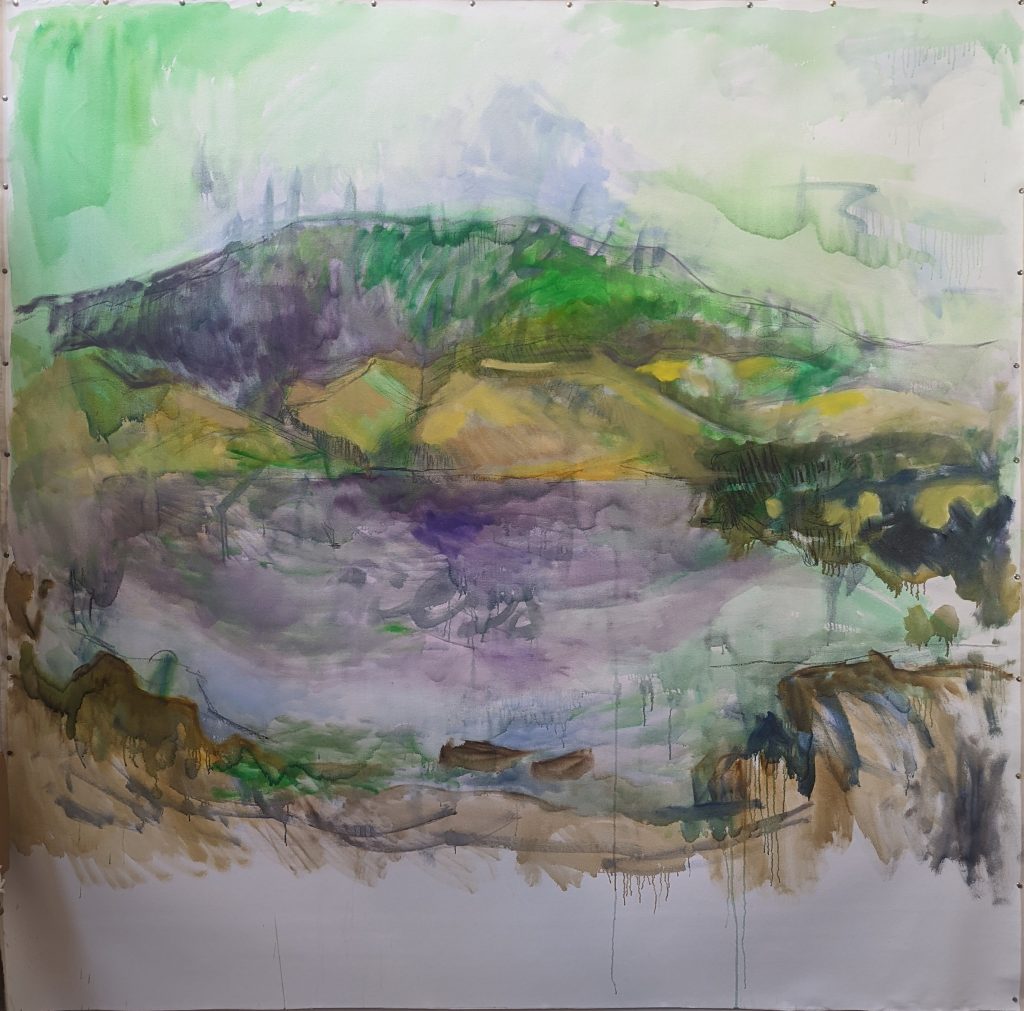
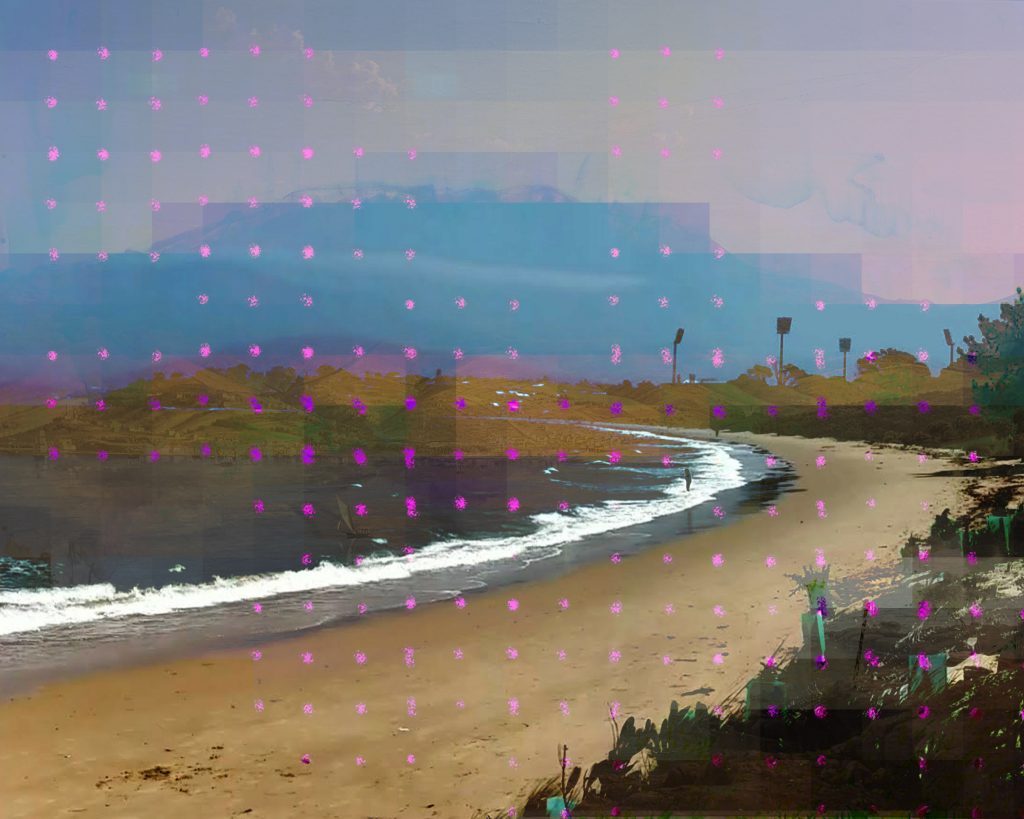
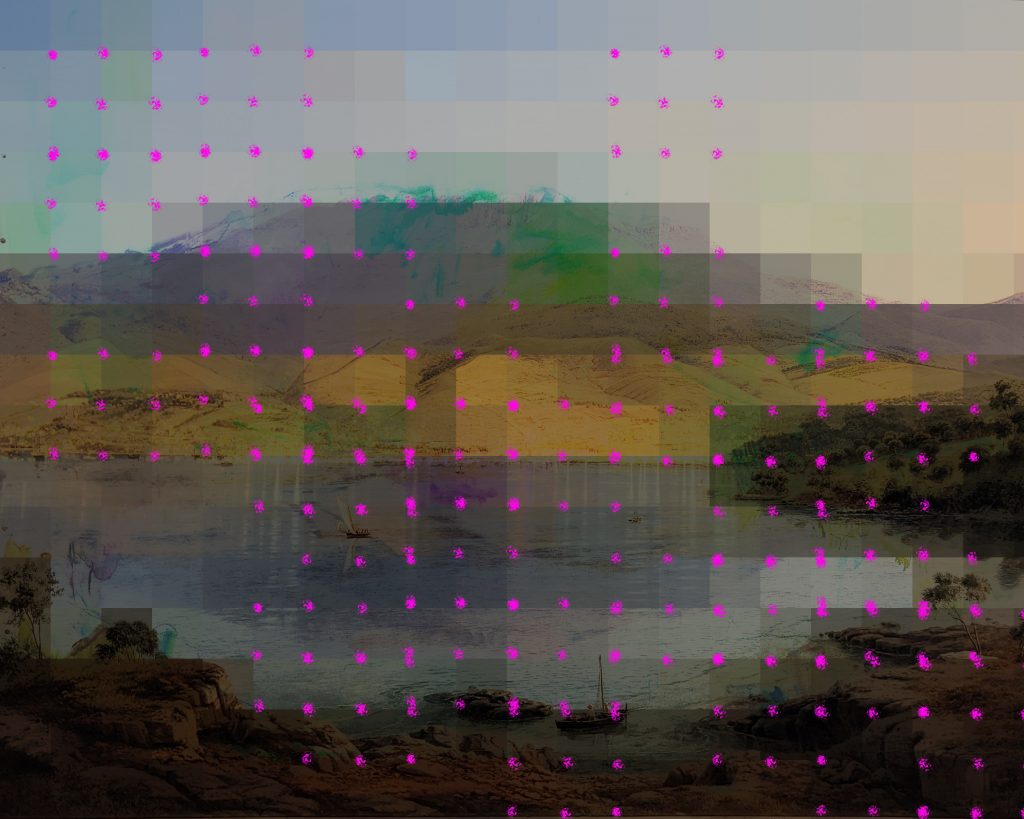
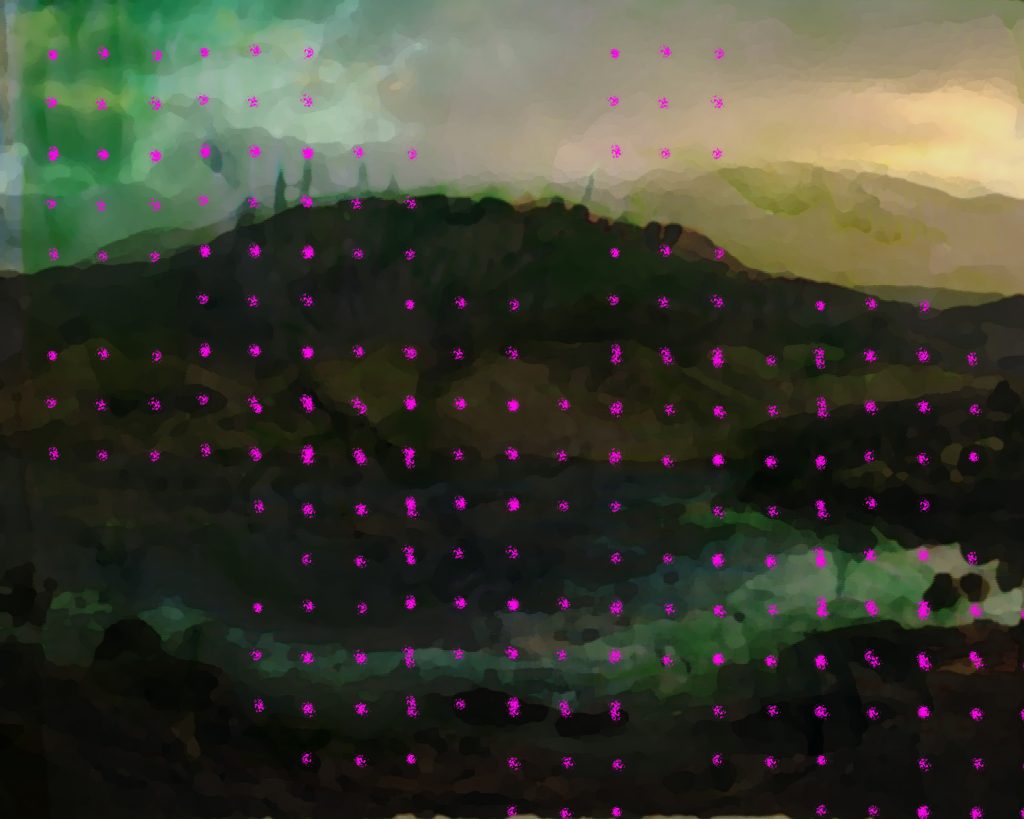
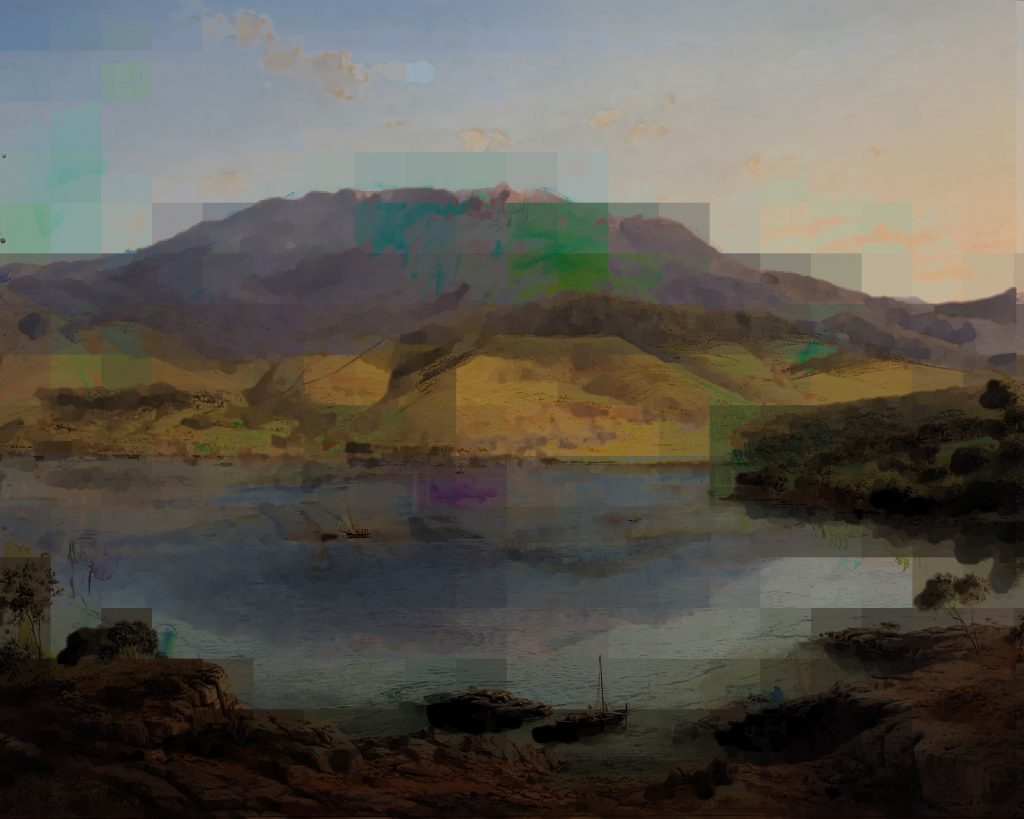
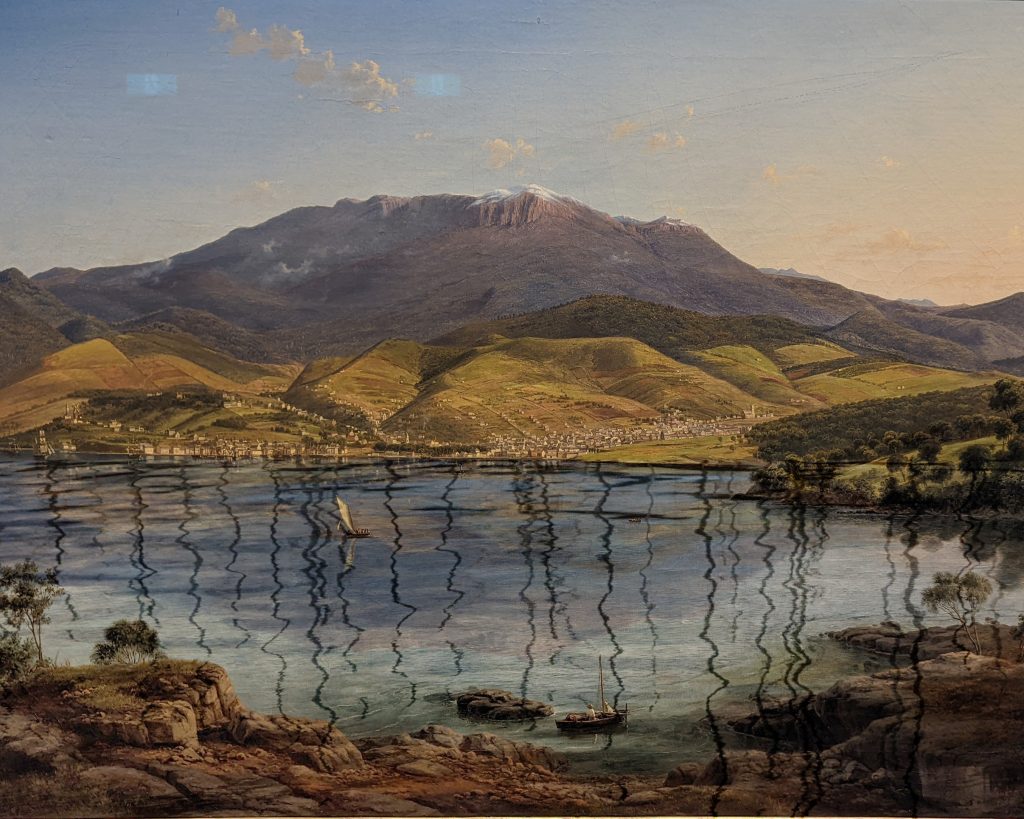
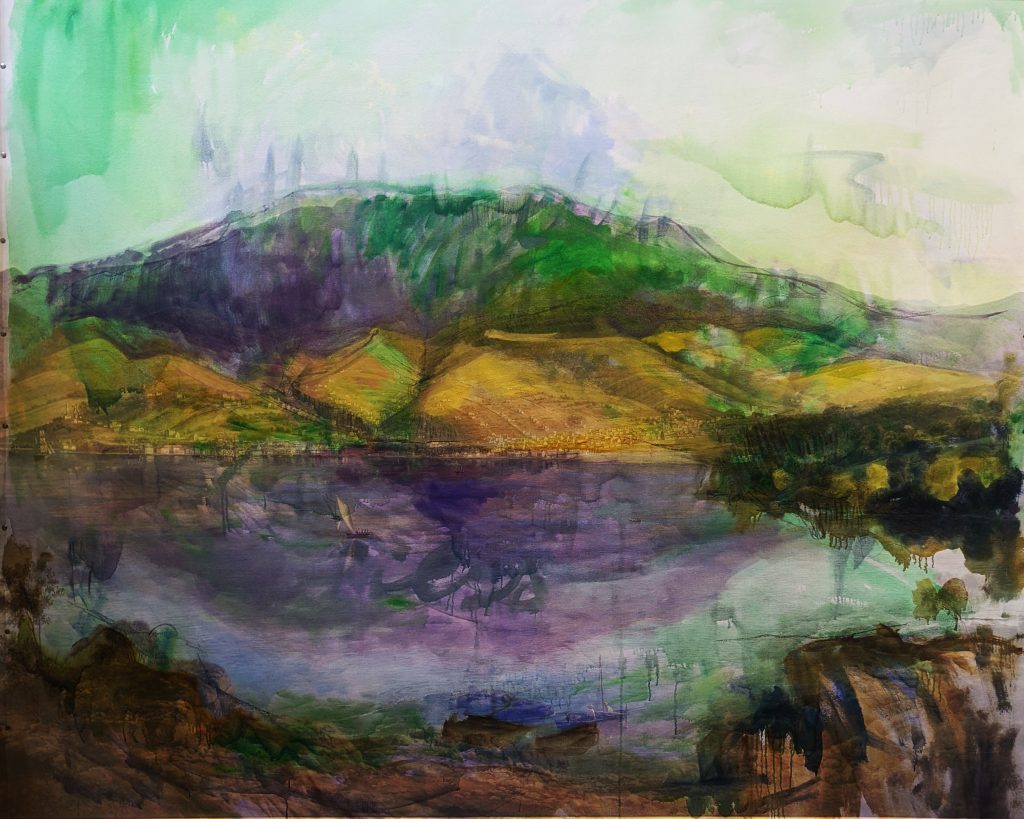
No Comments